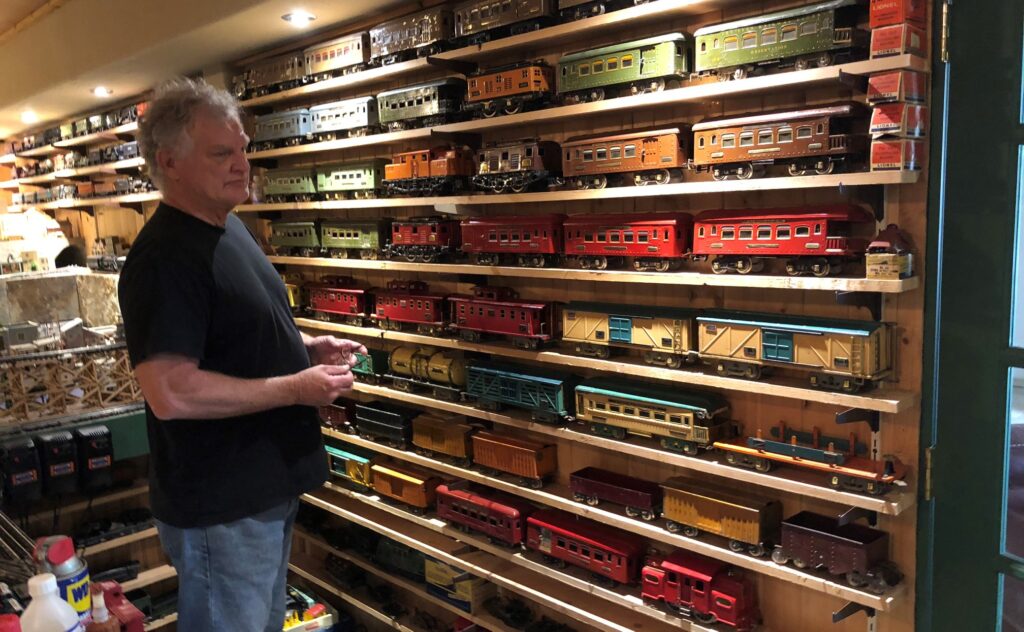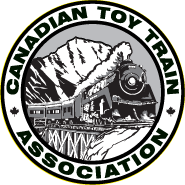Part 1 – A perspective, by John Constible.January 2019
Collecting trains over the years has been nothing less than enjoyable, fascinating, and intriguing.
The new products and the many companies today have become so intertwined with their sharing of technology, they seem to be so close or the same in appearance. In the last 30 years those products have flooded the marketplace. The majority of the products are just duplicates of their previous models. Many of today’s products have many features the original manufactures used in their imagination, but with no technology to create.
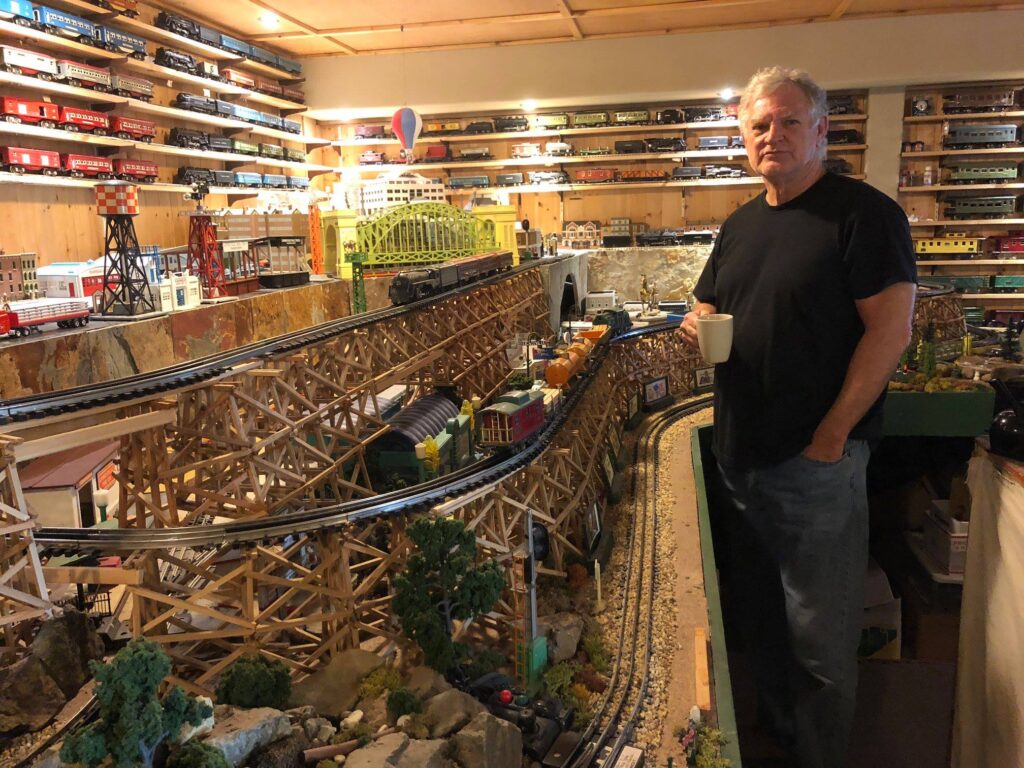
John Constible collects O gauge and Standard gauge. This large trestle supports some classic postwar O gauge trains.
Toy trains at the beginning of the 20th century allowed the imagination to go where ever it needed to go. Realism was created with young hands. Today, the imagination has been replaced with circuit boards and with that, the interaction has become no more than a TV remote.
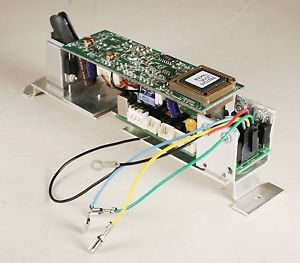
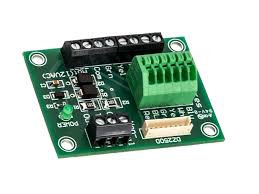
Saying that, I believe with all this new found technology, it has in some ways become a negative aspect of what the early toy manufactures were really trying to accomplish. At the beginning it was built for children, today the toys are now perceived investments, with costs that prohibits children to play with them.
Many of the toy train companies moved to Korea and China to access the much lower wages as it created a higher profitability of the products they were making to stay alive in the late 1990’s and early 2000’s. MTH, Lionel and K-line all had their problems and two of the three are still in business.
So with personally watching the entire new product lines hitting the market, very little was added to the beauty of the product other than a hand rail here or there or sprung trucks added for realism, so not much has changed. Same boxcar design new number. The insides of the engines changed with sound and functionality which became the big differences. With that, more repairs, more break downs and higher service costs have now become today’s norm.
In the early 70’s one circuit board could be replaced for less than $30.00. Anyone could replace them if they so desired. Today Boards have to be replaced on occasion and now cost hundreds. In most cases, the trains have to be sent to an authorized service center with staff that is factory trained. I also looked at the new trains for collect-ability verses prewar and postwar products. With grey market boards becoming available, the originality of the train changed. The train from the plant was no longer what it was. The sounds coming from the engine were great while they worked. The functions were many and all were good till a board failed.
With that, we had a transition period from old transformers to the new circuit breaker products which came to the market fairly slowly. As new trains went off the track and shorted, the boards failed. Hence the new transformers with circuit breakers with a much higher cost were manufactured. Because of the cost of the new transformers, most collectors still use the old postwar transformers, which is definitely a detriment to all the new products coming out.
Old transformers work well with old trains as the new transformers work well with the new trains.
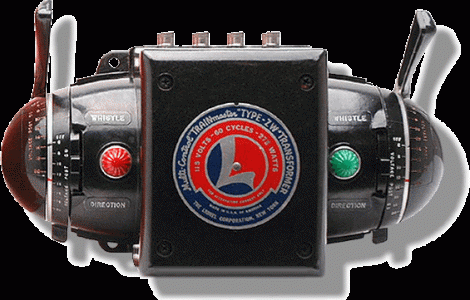
Lionel ZW postwar 275 watt transformer
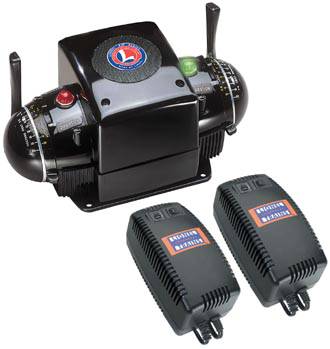
Lionel ZW-C transformer and 180 watt bricks
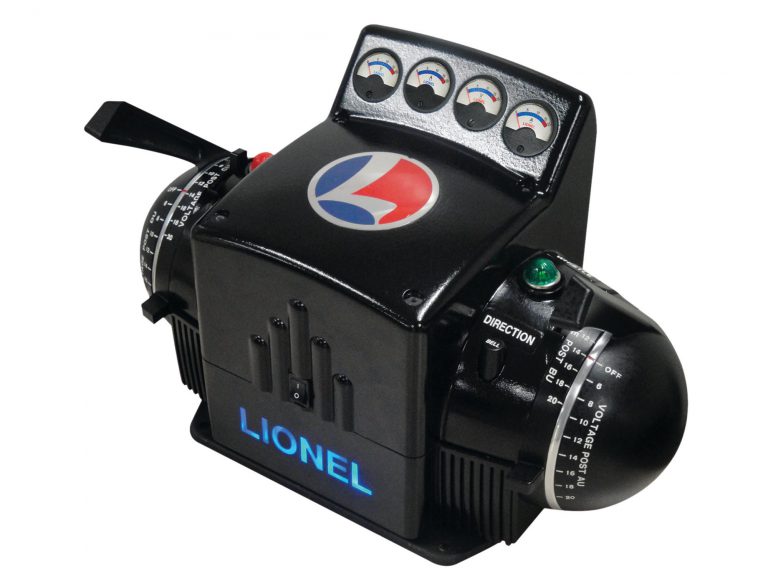
The Lionel ZW-Legacy transformer. The latest version of premier Lionel power, for modern trains.
I believe I joined the club in 1990. As the club and membership has changed over the years, so has my collection. Maybe as one gets older, a simpler life becomes more obvious and one gets a little more philosophical and rational about what they are collecting. I look at my walls and layout and see more trains turning 100 with every year that passes. I see less cost to repair and fewer parts needed to do the repair. I see many lifetimes that had these train’s before me and now are gone. I see a much simpler time back then, and maybe that is with all things today.
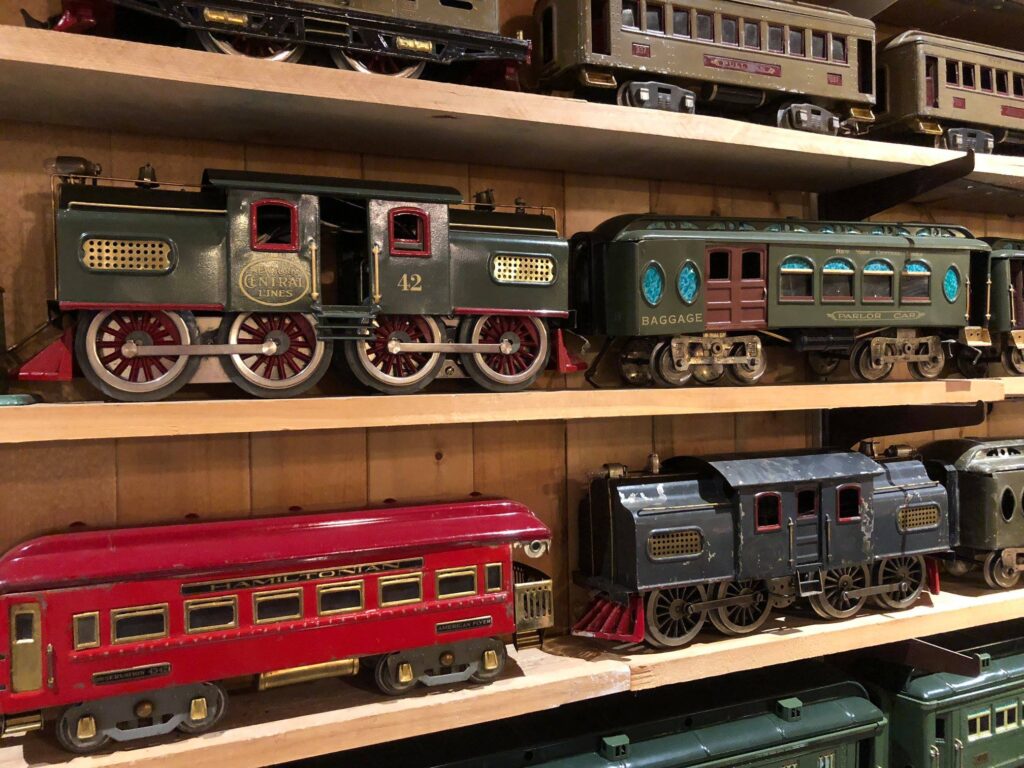
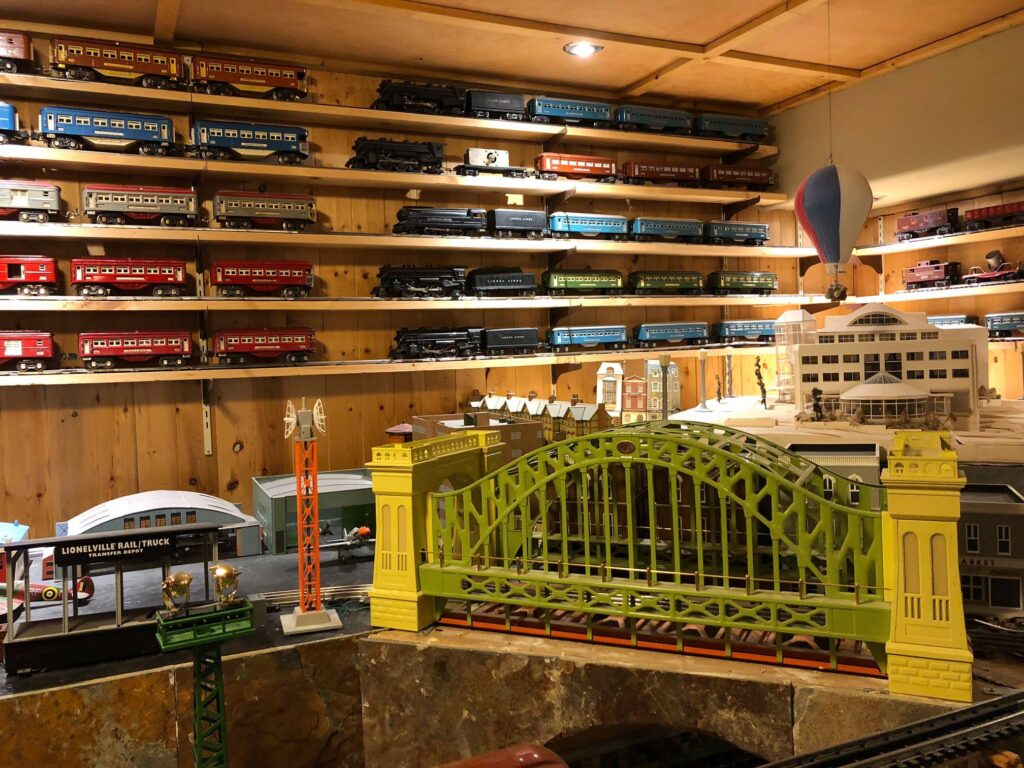
I can imagine and visualize the past when these big old trains came alive Christmas morning. When I turn on my power I can hear the sounds of track and train as the big engines and metal cars banged into each other going around the tree a hundred years ago. Many conversations were shared about the toys and the hard times of the era forgotten for the moment, replaced with smiles and laughter of the children.
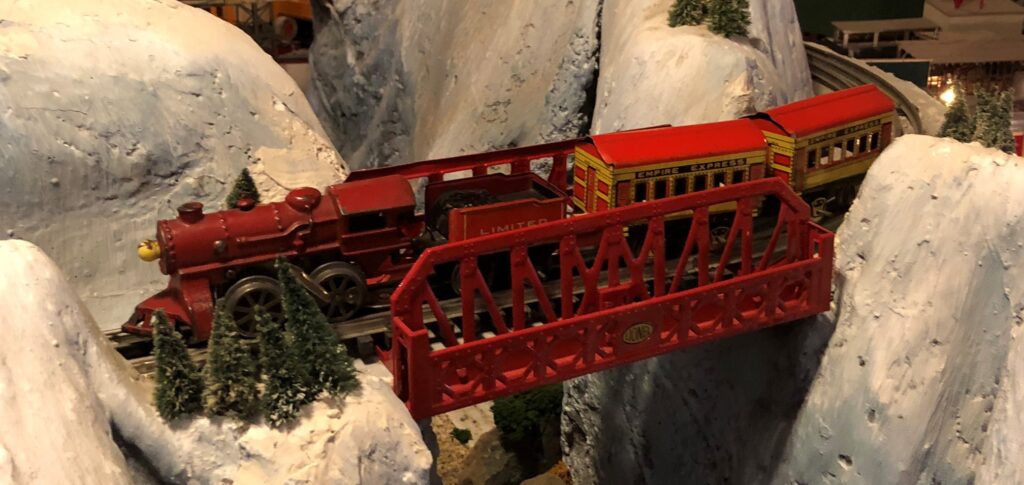
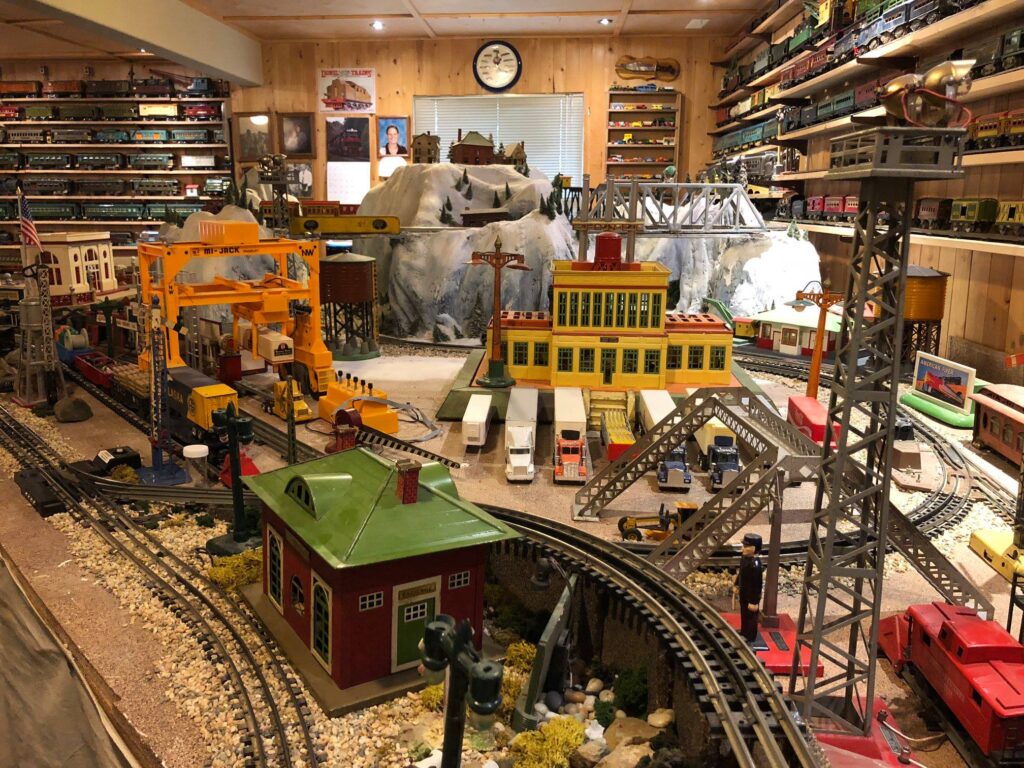
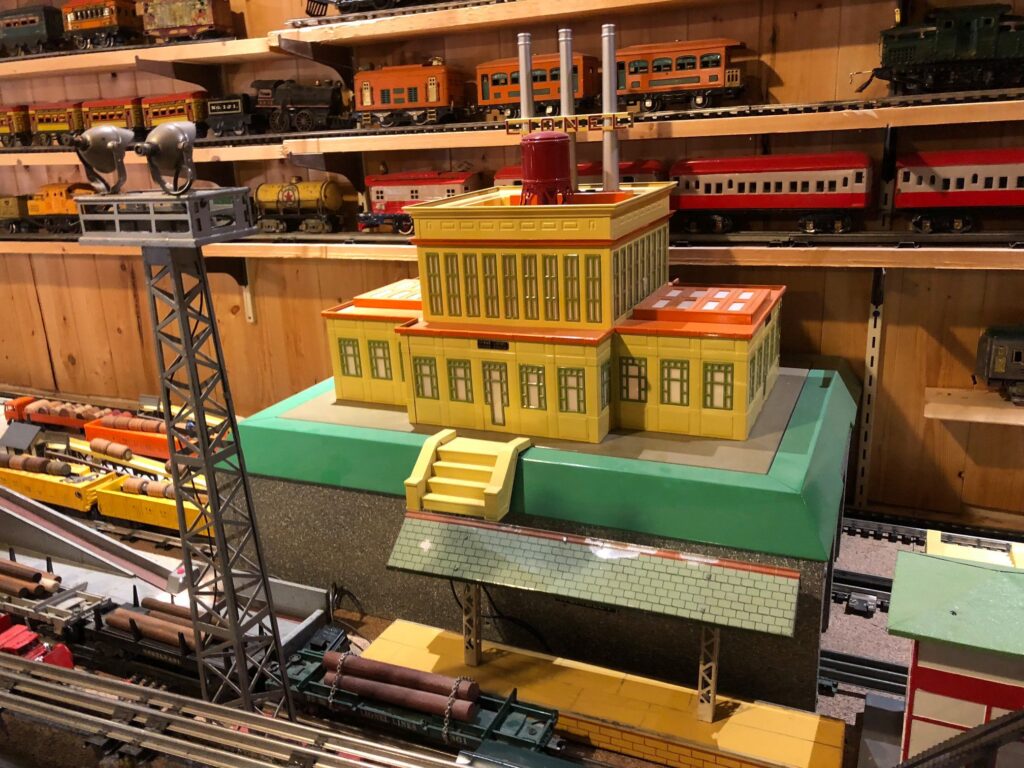
I see brass handles, big search lights and copper railings with latches joining the cars together. Cranes that could pick up metal safes in gondolas. I see toys that were played with and not just stared at. I see art and style created in different metals and not mass produced in plastic modes. I hear very young noises that make every effort to sound like a chugging steam engine or a whistle deep into the night. I hear conversations made up as a baggage handler or being a traveler climbing onto the steps of a Pullman heading to someplace far away.
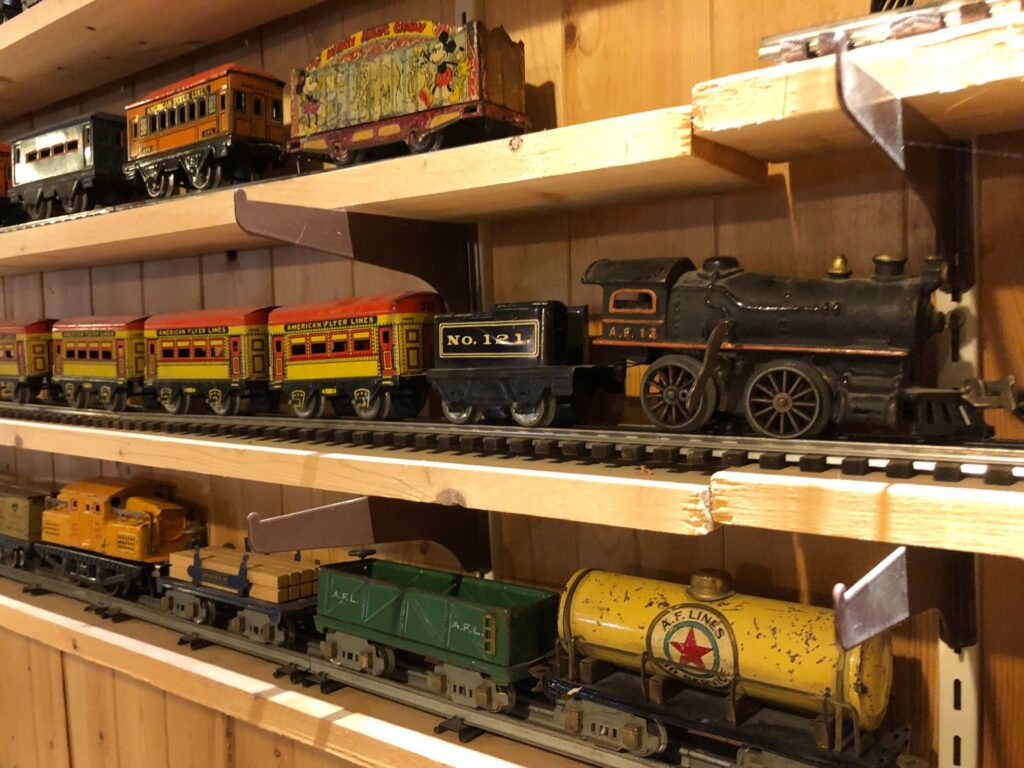
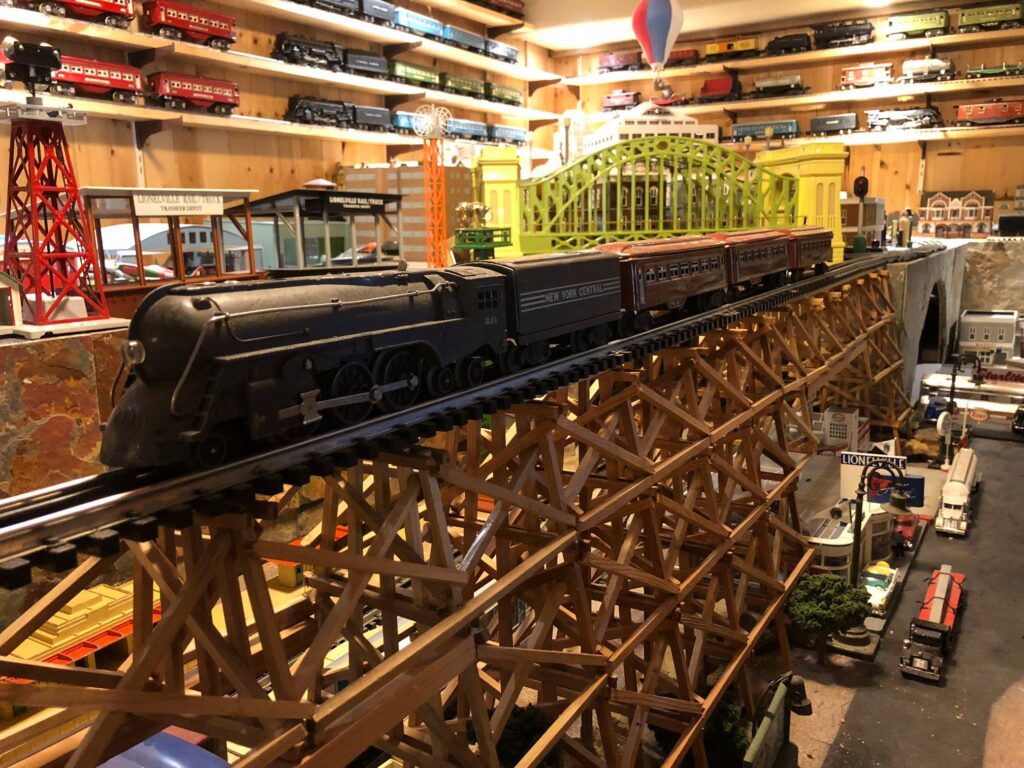
I can see the hands loading logs onto flat cars heading for the mill or freight into boxcars heading off to market. I can hear the sounds of the future wanting to grow up to be a engineer, a switchman, or mechanic. I can picture the days and times in the early teens of the 20th century. My trains allow me the luxury to remember how it was for my grandparents and parents during that time. My trains also gave me a window into who could afford which trains. I see no dissimilar today. Then it was $5.00 to $60.00, today it is $300.00 to $2,000.00.
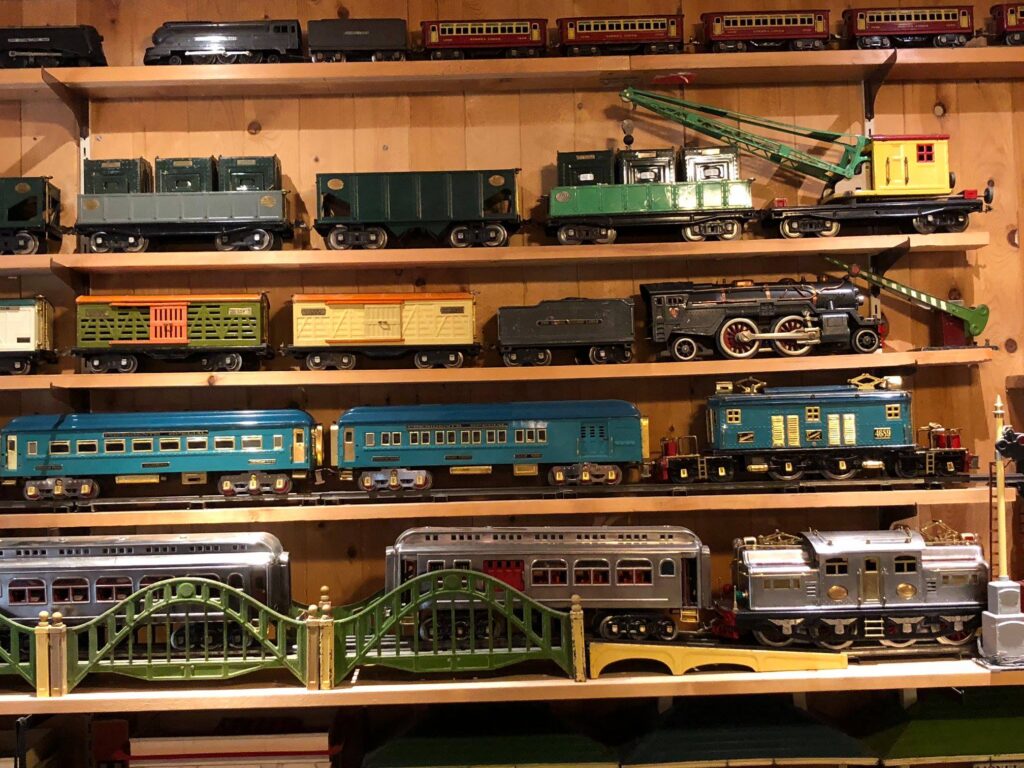
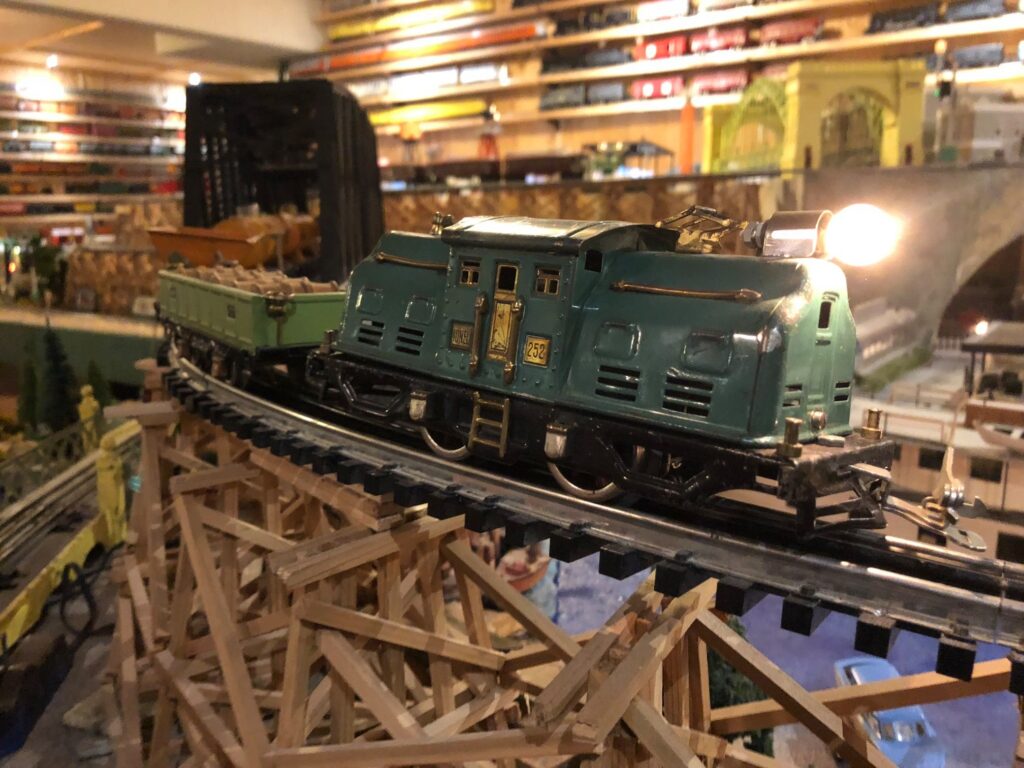
Whether the new immigrants in the teens coming to North American, or living during the roaring twenties, struggling through the dirty thirties, or having to go overseas during the war years of the 40’s. These old trains made it easier for the children of their era to cope and their imagination stay challenged. Prewar trains give me the opportunity to make use of my imagination and stay young as the trains get older.
So, I guess my trains are a collection of years of memories and to appreciate the value they have, I suppose that would be priceless?
